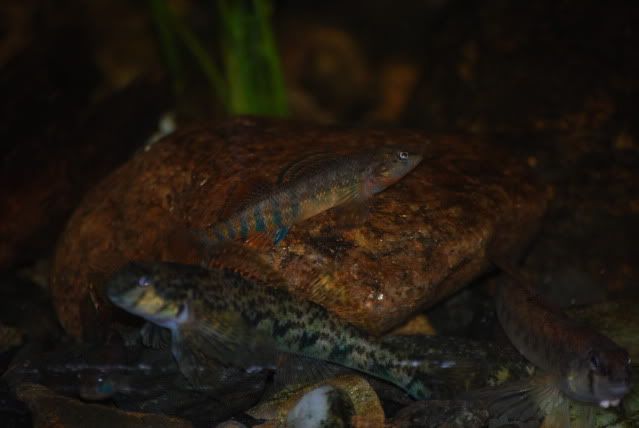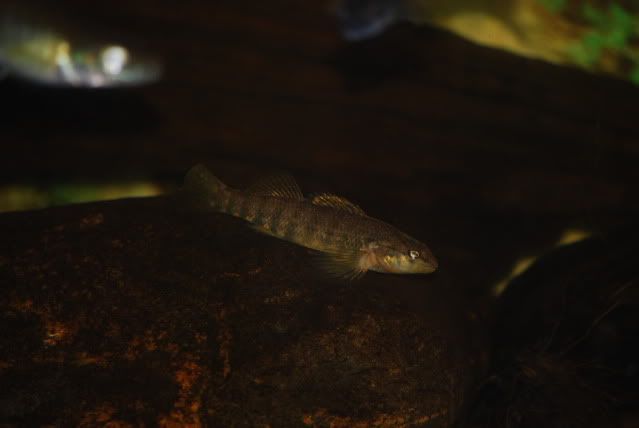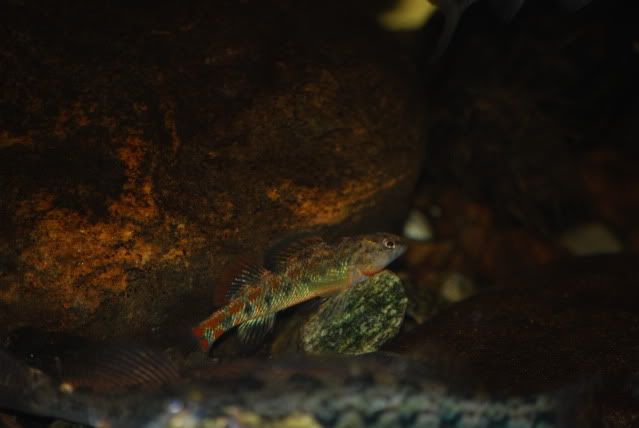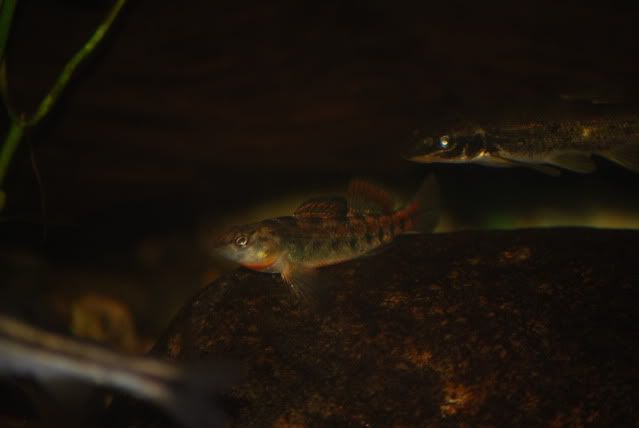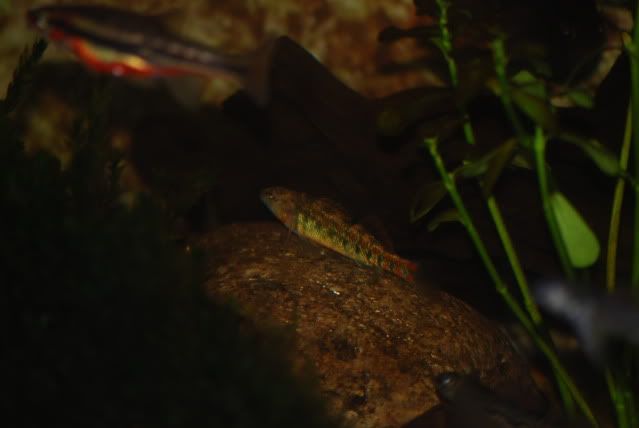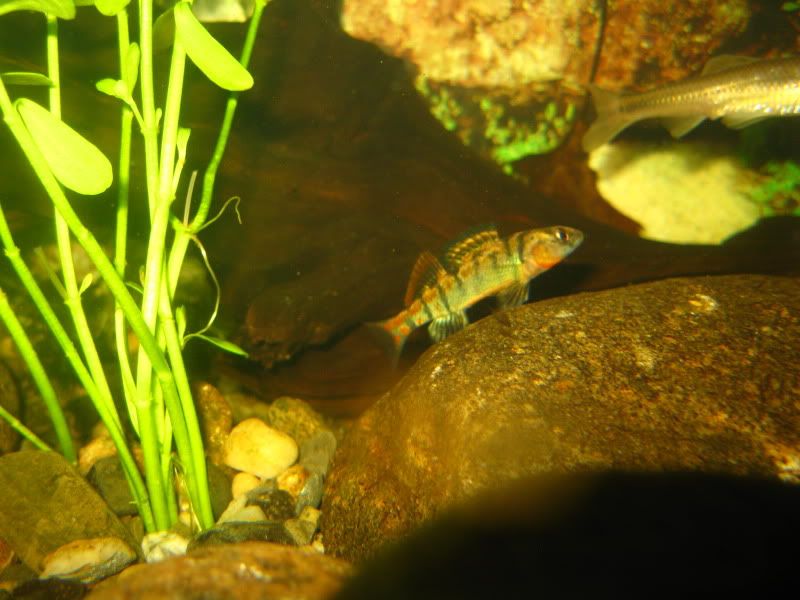Darters are sometimes transported with minnows and other bait fish as bycatch. They're not bait themselves, just in the wrong place at the wrong time. California has a few darters for this reason. It could be a 'bait bucket' release, but probably could also be a range expansion through man-made channels (a few of those across NY) and flooding.
At first glance it appears to be some sort of Etheostoma spectabile, but I think it may be a hybrid between E. caeruleum and E. variatum. It looks kinda like E. spectabile, because the vertical bars on the side are more vertical than diagonal, like they are in E. caeruleum. Also, there are fewer bars between the tail fin and anal fin, and the bars are wider than they usually are in E. caeruleum. However, if it's an introduction, then E. spectabile seems very unlikely, because it would have to have come from much farther than western NY. There are also two color patterns that don't fit E. caeruleum or E. spectabile and make me think it's a hybrid between E. caeruleum and E. variatum.
1) There is a distinct patch of orange on the belly. Etheostoma caeruleum and E. spectabile can get an orangish tint to the belly, but I've never seen a distinct orange patch as in this fish. This patch is common in E. variatum.
2) There is a metallic iridescence on the sides that Etheostoma caeruleum and E. spectabile do not get, but E. variatum does.
Additionally, if these are introductions, or invaders, from western NY, then E. variatum is likely to be involved. Etheostoma variatum is in western NY and likes the same habitat E. caeruleum likes, so it would probably be subject to the same event that led to the E. caeruleum introduction.
So, are there any E. variatum in the creek this darter was sampled from? If not, the introduction may have been very recent or the E. variatum may not have established after introduction, and now the only thing left are a few hybrid individuals.
Just a guess based on the pics.
Ben
I can see what you are saying. If it was E. spectabile it would definitely have been from further West than W. NY. Interesting fish to say the least. I did notice the head is not as "spade" shaped as E. caeruleum normally is. It has a little more of a sub-terminal look going on, much like E. variatum. Also the dorsal saddles are present, not in the big three like E. variatum, but more like the 7 of E. zonale. I know E. caeruleum can show saddles but from what I've seen, not usually very distinct like the ones in the pic.
Maybe we will all have to agree on Etheostoma species, that is until it dies and can be pickled!!!
Just too hard with only pixs
Tim
